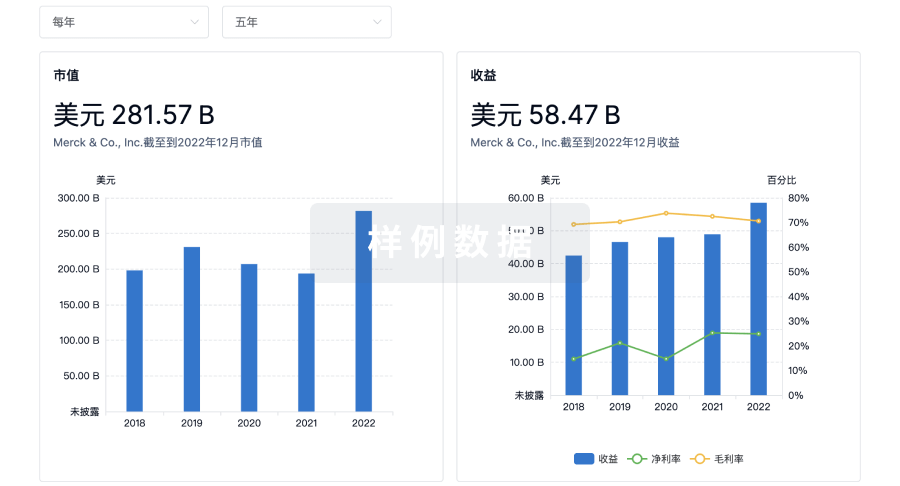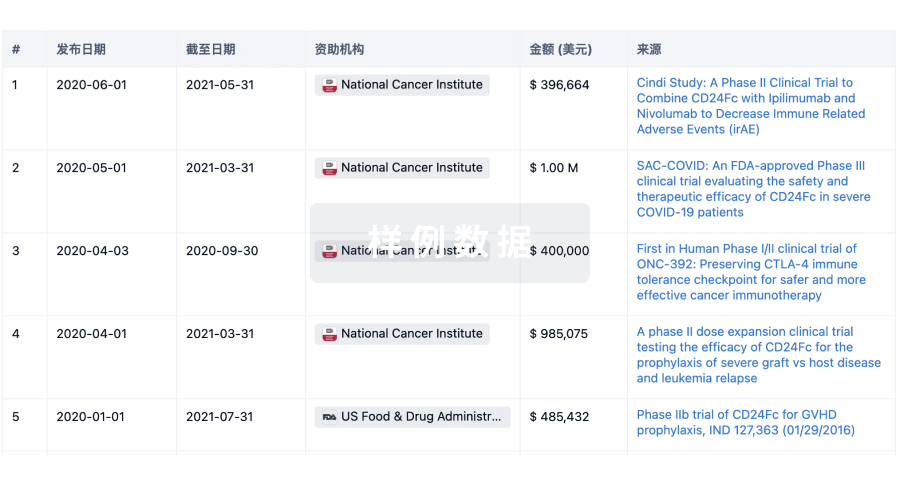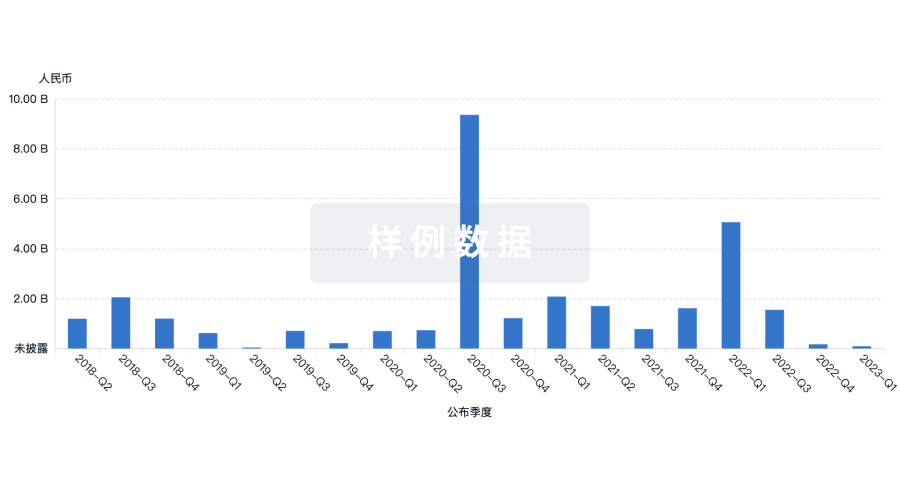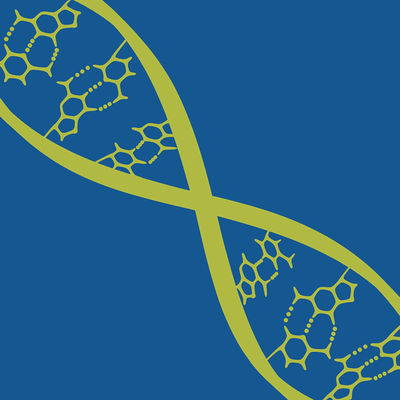预约演示
更新于:2025-09-09

Roche Holding AG
更新于:2025-09-09
概览
标签
免疫系统疾病
肿瘤
皮肤和肌肉骨骼疾病
单克隆抗体
小分子化药
双特异性T细胞结合器
疾病领域得分
一眼洞穿机构专注的疾病领域
暂无数据
技术平台
公司药物应用最多的技术
暂无数据
靶点
公司最常开发的靶点
暂无数据
| 排名前五的药物类型 | 数量 |
|---|---|
| 小分子化药 | 277 |
| 单克隆抗体 | 69 |
| 双特异性抗体 | 28 |
| 抗体 | 17 |
| 生物药 | 16 |
关联
562
项与 Roche Holding AG 相关的药物作用机制 Akt-1抑制剂 [+4] |
原研机构 |
最高研发阶段批准上市 |
首次获批国家/地区 美国 |
首次获批日期2025-08-06 |
靶点 |
作用机制 PI3Kα抑制剂 |
原研机构 |
非在研适应症- |
最高研发阶段批准上市 |
首次获批国家/地区 美国 |
首次获批日期2024-10-10 |
作用机制 透明质酸调节剂 [+1] |
原研机构 |
非在研适应症- |
最高研发阶段批准上市 |
首次获批国家/地区 美国 |
首次获批日期2024-09-12 |
5,349
项与 Roche Holding AG 相关的临床试验NCT07158242
A Phase III Randomized Double-Blind Multi-Center Treat-Through Study to Evaluate the Pharmacokinetics, Safety and Efficacy of Induction and Maintenance Therapy With Afimkibart (RO7790121) in Children Aged 2 - 17 Years With Moderately to Severely Active Ulcerative Colitis
This Phase III, randomized, double-blind, multicenter, induction and maintenance study will evaluate the safety and efficacy of Afimkibart (RO7790121) in pediatric participants with moderate to severe active ulcerative colitis (UC).
开始日期2026-03-31 |
申办/合作机构 |
NCT07049848
SATURN-STS: Phase II Study of Neoadjuvant Atezolizumab With Doxorubicin, Concurrent Atezolizumab With Pre-operative Radiation Therapy and Adjuvant Atezolizumab in Patients With High-risk Surgically Resectable Extremity and Truncal Soft Tissue Sarcoma
The goal of this clinical research study is to look at the effectiveness of giving a combination of chemotherapy, immunotherapy, radiation therapy, and surgery to treat soft tissue sarcomas that can be removed by surgery. Researchers want to find out if this treatment combination can extend the time it takes for the disease to relapse (come back after treatment). The safety of this treatment combination will also be studied.
开始日期2025-12-01 |
NCT06793215
A Phase III, Randomized, Open-Label Study Evaluating the Efficacy and Safety of Divarasib and Pembrolizumab Versus Pembrolizumab and Pemetrexed and Carboplatin or Cisplatin in Patients With Previously Untreated, KRAS G12C-Mutated, Advanced or Metastatic Non-Squamous Non-Small Cell Lung Cancer
The purpose of this study is to evaluate the efficacy and safety of divarasib and pembrolizumab compared with pembrolizumab and pemetrexed and carboplatin or cisplatin, for the first-line treatment of adult participants with KRAS G12C-mutated, advanced or metastatic non squamous non-small cell lung cancer (NSCLC).
开始日期2025-12-01 |
100 项与 Roche Holding AG 相关的临床结果
登录后查看更多信息
0 项与 Roche Holding AG 相关的专利(医药)
登录后查看更多信息
21,161
项与 Roche Holding AG 相关的文献(医药)2026-01-01·INTERNATIONAL JOURNAL OF CARDIOLOGY
Effect of age and sex on cardiac magnetic resonance native T1 mapping and synthetic extracellular volume
Article
作者: Haider, Achi ; Gebhard, Caroline E ; Gebert, Pimrapat ; Fuentes Artiles, Rubén ; Gebhard, Catherine ; Rossi, Alexia ; Mikail, Nidaa ; Buechel, Ronny R ; Gräni, Christoph ; Bengs, Susan ; Wahl, Andreas ; Vinzens, Adriana ; Corpataux, Noé ; Regitz-Zagrosek, Vera
BACKGROUND:
Cardiac magnetic resonance (CMR) using native T1 mapping and extracellular volume (ECV) fraction is the gold standard for noninvasive detection of diffuse myocardial fibrosis. Previous studies indicate that women tend to have higher native T1 and ECV values than men, but how these parameters evolve with cardiac aging remains unclear.
METHODS AND RESULTS:
Relations between age, sex, and native T1 and synthetic ECV were assessed in 306 individuals (mean age 45 ± 18 years; 47.4 % women) free of structural cardiac disease undergoing clinically indicated CMR imaging on a 1.5 Tesla scanner. Woman had significantly higher T1 values (1025 ± 38.1 versus 1000.5 ± 33.3 ms, p < 0.001) and ECV (27.9 ± 3.3 versus 25.3 ± 3.1 %, p < 0.001) compared to men. While T1 values and ECV decreased with age in women, an opposing age-effect was observed in men (p = 0.042 and p = 0.009 for women vs men, respectively). In adjusted models, age and female sex were significantly associated with higher native T1 and ECV values (p < 0.05), while the interaction term for female sex*age showed an inverse relationship with both parameters (p < 0.001). ECV, but not native T1 relaxation times, was significantly influenced by left ventricular end diastolic volume (LVEDV, p < 0.001) and LV mass (p = 0.015), with larger LV volumes and lower LV mass correlating with higher ECV values.
CONCLUSION:
This CMR study demonstrates that native T1 and ECV are influenced not only by sex and age, but also by their interaction, as well as by cardiac chamber size and heart rate. These factors should be jointly considered when interpreting myocardial tissue parameters in older individuals.
2025-12-31·JOURNAL OF MEDICAL ECONOMICS
Cost-effectiveness analysis of bispecific antibody faricimab for treatment of neovascular age-related macular degeneration and diabetic macular edema in Japan
Article
作者: Igarashi, Ataru ; Sakashita, Naotaka ; Shoji, Ayako ; Higashi, Kentaro ; Tsujimura, Jun ; Ohno, Shinya ; Yanagi, Yasuo
OBJECTIVE:
To assess the cost-effectiveness of faricimab vs. other anti-vascular endothelial growth factor (anti-VEGF) drugs for treatment of neovascular age-related macular degeneration (nAMD) and diabetic macular edema (DME) in Japan, while considering societal burden associated with treatment.
METHODS:
A Markov model for cost-effectiveness analysis of anti-VEGF treatment in patients with nAMD and DME was applied based on cost and utility value data from Japan. Faricimab administered through a treat-and-extend (T&E) regimen was compared with ranibizumab administered pro re nata (PRN) and T&E, aflibercept T&E, brolucizumab T&E, and best supportive care (BSC). Further to treatment costs (public payer perspective), the societal burden (societal perspective), including costs of travel, informal care, and productivity, was assessed.
RESULTS:
In treatment of nAMD, lifetime quality-adjusted life years (QALYs) gained were highest with faricimab (faricimab T&E: 6.92, ranibizumab PRN: 6.88, ranibizumab T&E: 6.91, aflibercept T&E: 6.89, brolucizumab T&E: 6.89, BSC: 5.99). From the public payer perspective, the lifetime total cost for faricimab T&E was lower than those for ranibizumab (PRN, T&E) and brolucizumab (T&E), comparable to aflibercept T&E, and higher than BSC (incremental costs: 158,385 and 6,475,511 JPY, respectively). As a result, faricimab was cost-effective or dominant in the treatment of nAMD, excluding BSC. From the societal perspective, faricimab was dominant against all comparators in nAMD. In treatment of DME, QALYs gained were highest with faricimab (faricimab T&E: 8.51, ranibizumab PRN: 8.17, aflibercept PRN: 8.36, ranibizumab T&E: 8.13, BSC: 5.16). From both the public payer and societal perspectives, faricimab was dominant against all comparators in DME.
CONCLUSIONS:
When societal burdens were considered, faricimab was dominant in both nAMD and DME against all comparators, suggesting that the extended dosing interval associated with faricimab treatment may alleviate societal burdens and consequently improve patient outcomes.
2025-12-31·mAbs
Proceedings of the 15
th
European immunogenicity platform open symposium on immunogenicity of biopharmaceuticals
作者: Poyau, Alain ; Kromminga, Arno ; Garidel, Patrick ; Wuttke, Rene ; Loeff, Floris ; Nelson, Robert ; Pattyn, Sofie ; Verthelyi, Daniela ; Minelli, Francesca ; Rosenberg, Amy ; Horling, Frank ; Bloem, Karien ; Johnson, Alison ; Jyamubandi, Issa ; Grudzinska-Goebel, Joanna ; Kramer, Daniel ; Pepermans, Elise ; Maillere, Bernard ; Champion, Lysie ; Pallardy, Marc ; Smith, Noel ; Nayak, Vivek ; Pedras-Vasconelos, Joao ; Tourdot, Sophie ; Ichetovkin, Marina ; Saxena, Manisha ; Karle, Anette ; Reichel, Matthias ; De Groot, Anne S. ; Sauna, Zuben ; Michaut, Lydia ; Thoo, Lester ; Snoeck, Veerle ; Ducret, Axel ; Gutknecht, Michael ; Kurtulmus, Ebru Aydin ; Hickling, Timothy ; Yerly, Daniel ; Nielsen, Morten ; Tovey, Michael
The European Immunogenicity Platform (EIP) celebrated the 15th edition of its Open Symposium on Immunogenicity of Biopharmaceuticals and its associated one-day workshop on 22-24 February 2024 in Lisbon. The meeting attracted experts and newcomers across industry, regulatory agencies, and academia, who actively participated in 3 days of discussion on risk assessment, monitoring, and mitigation of unwanted immunogenicity of biologics. Besides oral presentations, poster sessions were held to maximize scientific exchange and networking opportunities. Therapeutic proteins and emerging gene and cell-based therapies present promising therapeutic options for addressing unmet medical needs or when conventional treatment approaches have failed. Nonetheless, the development of an immune response against these therapeutic agents is a significant concern, as it occurs in a considerable number of cases across various products and indications. The specific anti-drug antibodies that develop can lead to adverse safety events, inhibition of drug activity, or accelerated clearance, all of which result in a loss of treatment efficacy. The EIP serves as a forum for experts and newcomers in the immunogenicity field, fostering discussion among scientists from industry and academia, encouraging interactions with regulatory agencies, and disseminating knowledge and advancements in immunogenicity sciences to the broader scientific community. This report covers the main topics discussed during the EIP 15th Open Symposium on Immunogenicity of Biopharmaceuticals, and the one-day workshop on practical aspects of immunogenicity held prior to the conference. Key topics included immunogenicity testing, clinical relevance of immunogenicity, immunogenicity risk assessment and mitigation, and current regulatory considerations.
20,169
项与 Roche Holding AG 相关的新闻(医药)2025-09-09
Basel: Swiss pharma major Novartis is moving to acquire a New York based
cardiovascular therapy
developer
Tourmaline Bio
for s total cash consideration of $1.4 billion.
Under the agreement Novartis through an indirect wholly owned subsidiary will commence a tender offer to purchase all outstanding shares of Tourmaline at a floor price of $48 per share in cash accumulating to total value of around $1.4 billion.
Novartis will own Tourmaline as an indirect wholly owned subsidiary and expects to close the acquisition by the fourth quarter of 2025. ‘
Key driver of the deal is Tourmaline ‘s
Pacibekitug
, a Phase-3 ready human monoclonal antibody investigated over atherosclerotic cardiovascular disease (ASCVD).
The experimental biologic targets interleukin 6 ligand (IL-6) a pro-inflammation related in various kinds of inflammation and the drug inhibits its interaction with the receptor thereby blocking the signaling pathway that promotes systemic inflammation.
Subject to approval, the therapy is in contest with Tocilizumab marketed by another Swiss giant Roche under the name Actemra/RoActemra.
Another
IL-6 inhibitor
available in the market is Regeneron’s Sarilumab, marketed under the brand name Kevzara.
“With no widely adopted anti-inflammatory therapies currently available for cardiovascular risk reduction, Pacibekitug represents a potential breakthrough in addressing residual inflammatory risk in ASCVD with a differentiated mechanism of action targeting IL-6," said Shreeram Aradhye, Chief Medical Officer, Novartis.
By
Online Bureau
,

上市批准并购临床3期
2025-09-09
首例创新药Biotech把明星CRO上市公司告上公堂,或折射出双方生存空间受限的困境,以及低水平价格战下长期积累的矛盾公开化。
撰文| Erin
继CRO行业接连爆出破产、欠薪、实控人被限高的阴影之后,CRO明星公司——美迪西,也被卷入了风暴眼。
9月4日,美迪西公告称,子公司美迪西普亚被Biotech客户鸿绪生物一纸诉状,告上公堂,550多万元的合同金额,索赔1.5亿。
官司未定、是非未明,但这组陡峭差额的背后,是两端同时失速的现实:
被头部Pharma与头部Biotech“夹击”尾部Biotech,既“等不到风来”,也“迎不住风去”,研发竞速、临床进展与融资预期本就三线拉扯,又遇上正在打“价格战”的CRO,更是难上加难。
而一批中小CRO在今年投融资回暖中“表面回温”, 曾用低价换规模的单子,开始在项目节奏、临床预期与时间成本上被反噬。价格战这两年拖累的,不只是毛利,更是客户对项目交付质量与速度的信任。风口退潮后,曾经埋下的雷,似乎要爆了。
首例创新药Biotech把临床CRO告上公堂,这场风波能够引起广泛讨论也不是在宣判谁对谁错,而是在提醒整个行业:靠压价堆出来的规模,经不起快赛道的兑现考验;把成本省在前面,可能要在速度与质量上加倍偿还。行情回暖未必等于风险消散,恰恰相反,它更像一束强光,把每一个被低价掏空的项目,清清楚楚地呈现在台前。
550万合同款,却索赔1.5亿背后
9月4日,美迪西一纸《关于子公司涉及诉讼的公告》,把“索赔1.5亿元”迅速送上业界热搜榜。舆论的第一反应并非这笔金额会否危及美迪西的业绩,而是更尖锐的矛盾:约550多万元的合作款,怎么就放大到1.5亿元的索赔?
根据美迪西的公告内容,目前该案件已立案,尚未开庭审理。因此,呈现在业界眼前的,还是双方各有各的理。
一边是美迪西的表述。其子公司与鸿绪生物在2020年12月签署《技术服务合同》,开展一项中美双报的IND非临床安评研究,约定8个月内完成分析检测、安全性评价、翻译和SEND转化四项工作。项目最终于2023年12月14日拿到NMPA临床试验批件(IND)。美迪西称公司“已全面、适当地履行合同义务”,2025年上半年该项目遭遇“有因检查”,但“未查见真实性问题”,其研发质量体系亦获得全球主要药监机构认可。
也就是说,美迪西不认可原告所指,合同义务已全面、适当地履行,所谓违约并不存在。
另一边是原告鸿绪生物的逻辑。合同里非临床安评8个月的时限,现实中却到第三年才完成IND。并且虽然2023年拿到了批件,却在之后又遭遇“有因检查”,这种带有申报资料真实性存疑“暗示”的检查。
2020年签下非临床安评合同,2023年才拿到IND批件,时间是否过长难以评价,但从市场竞争角度来看,在GLP-1/GIP这种“短跑式”、高速迭代的热门赛道里,时间价值尤显残酷,而鸿绪生物显然慢了一步。
要知道,全球FIC——礼来的替尔泊肽在2022年获批,2023年销售额突破51亿美元;彼时,国内头部药企也在争相提速推进,恒瑞的同双靶点HRS9531注射液已经进入关键临床阶段,信达甚至在2023年H1中报已经能够预告出全球首个GCG/GLP-1双受体激动剂玛仕度肽(IBI362)预计2024年底或2025年初上市。同时,华东、翰森等头部Pharma的GLP-1产品也都相继进入了临床。
如今,恒瑞HRS9531已提交上市申请,信达的GCG/GLP-1双受体激动剂玛仕度肽IBI362已获批上市并成为当红产品。
节点洪流滚滚向前,一家想抓风口的Biotech,若在IND阶段拖了后腿,研究进展赶不上头部大药企,甚至连IND批件都没拿到,又赶上资本寒冬,说破了天,投资人似乎不会愿意对其拿出一分钱。
于是,在鸿绪生物的账本里,与美迪西的矛盾早已不再局限在一纸550多万的合同,而是真实折损的经济损失,融资与估值冲击、研发开发周期的沉没成本,再加上突然降临带有申报材料存疑“暗示”的有因检查,这些统统被“写入”1.5亿元的诉讼主张中,才造成与合同对价的巨大落差。
推荐阅读
* 谁“杀”死了中小CRO?
* 市值蒸发400亿后,CRO小巨头曲线自救,难反转
“信任危机将爆发?
从本质上来说,这起“中国首次CRO与Biotech之间就风口创新药产品对簿公堂”事件,还折射出了创新药产业链上下游在穿越周期过程中,难以调和的矛盾。
对于鸿绪生物等中小型Biotech来说,无论是押注一个赛道“等风来”,还是在热门赛道“随风去”,核心竞争力都少不了研发竞速。然而,当研发竞速遇上CRO调整周期里的不确定性,研究质量、研发速度以及预期之间的矛盾也因此产生。
而对于美迪西这样的中小CRO来说,本来在创新药研发风口过后,就是“价格战”的最先被波及的群体,不仅订单量骤缩、客单价跳水,更难的是客户几乎都是初创Biotech,他们融资断档、现金流吃紧,让中小CRO们又面临回款周期无限拉长,日子更不好过了。
Wind数据显示,截至2025年H1,A股29家医疗研发外包公司的应收账款平均为6.85亿元,应收账款周转天数约为93.88天;而美迪西的应收账款虽然为5.4亿元,但应收账款周转天数高达181.18天,远高于平均水平。
而到了如今,当下二级市场回暖、全球创新研发频出,一级市场也开始重新审视Biotech资产,BD交易升温,一度绷紧的产业链仿佛松了口气。
位于创新研发产业链上的中小CRO们日子刚好过一点,业绩曾“爆雷”的“美迪西们”业绩刚有起色,但这起诉讼像一记回声巨响,提醒行业:调整周期遗留的信任危机,并不会因为行情转暖而自动失效。
以美迪西为例,2023年其营收与利润大幅跳水,药物发现与药学研究、临床前研究两条线的客单价分别骤减36.81%与23.59%,唯一向上的是“客户数量”, 分别同比增加35.98%与3.97%。
更进一步的是,过去两年,不少这类中小CRO还困在“价格战”带来的业绩下滑、回款困难的境地,而这起新发生的诉讼直接让行业意识到,项目交付质量与速度,与客户研发投入的沉没成本、管线估值直接挂钩,卷价格的尽头将不再只是现金流风险与经营压力,还将面临更加严苛的远超项目金额的赔偿风险与法律风险,也让在全行业的回暖周期中,制药企业对中小CRO的信任亮出一张黄牌。
此外,这起事件也提醒中小CRO,效率与质量本身才是招牌,若不在合同和定价中设限,它或将在法庭里以更高的代价向你收回。
而对于初创Biotech来说,不仅要在合作方筛选环节做好尽调,更要从合同条款设计、履行监控到争议解决构建全流程管理体系。此外,对于行业而言,此时也亟需一份指南标准,明确进度延误赔偿比例、质量缺陷认定标准、责任划分节点等保护研发企业的条款,同时也要设置针对中小CRO的回款周期保障规则。
一审| 黄佳
二审| 李芳晨
三审| 李静芝
精彩推荐
大事件 | IPO | 融资&交易 | 财报季 | 新产品 | 研发日 | 里程碑 | 行业观察 | 政策解读 | 深度案例 | 大咖履新 | 集采&国谈 | 出海 | 高端访谈 | 技术&赛道 | E企谈 | 新药生命周期 | 市值 | 新药上市 | 商业价值 | 医疗器械 | IND | 周年庆
大药企 | 竞争力20强 | 恒瑞 | 石药 | 中生制药 | 齐鲁 | 复星 | 科伦 | 翰森 | 华润 | 国药 | 云南白药 | 天士力 | 华东 | 上药
创新药企 | 创新100强 | 百济 | 信达 | 君实 | 复宏汉霖 | 康方 | 和黄 | 荣昌 | 亚盛|康宁杰瑞|贝达|微芯|再鼎|亚虹
跨国药企|MNC卓越|辉瑞|AZ|诺华|罗氏|BMS|默克|赛诺菲|GSK|武田|礼来|诺和诺德|拜耳
供应链|赛默飞|药明|凯莱英|泰格|思拓凡|康龙化成|博腾|晶泰|龙沙|三星
启思会 | 声音·责任 | 创百汇 | E药经理人理事会 | 微解药直播 | 大国新药 | 营销硬观点 | 投资人去哪儿 | 分析师看赛道 | 药事每周谈 | 中国医药手册
临床申请专利侵权
2025-09-09
药物研发领域的“资产流转”再添新的经典案例。
9月9日,诺华宣布已与临床阶段的生物制药公司Tourmaline Bio达成一项收购协议,将以每股48美元的价格收购后者,总交易额约为14亿美元,预计在2025年第四季度完成。据悉,Tourmaline Bio唯一的核心资产Pacibekitug(TOUR006)是一款临床在研长效抗IL-6单抗,正在开发作为动脉粥样硬化性心血管疾病(ASCVD)的新治疗选择。
炎症是心血管疾病的主要驱动因素,但目前尚无广泛采用的抗炎疗法可用于降低心血管风险。而TOUR006靶向的IL-6是一种促进全身炎症的关键上游细胞因子,将解决未被满足的临床需求。诺华认为,TOUR006的Ⅱ期临床进展顺利,通过并购获得该Ⅲ期临床就绪资产,将补充其现有的心血管疾病产品组合。
值得一提的是,TOUR006最早由辉瑞研发(研发代号PF-04236921),后被视为超出需要的多余项目资产,被出售给Tourmaline Bio。然而,与辉瑞的研发思路相异,Tourmaline Bio使TOUR006走上了治疗炎症疾病的不同路径,最终被诺华收购。
强化心血管核心战略
Tourmaline Bio成立于2021年,其创始人兼CEO Sandeep Kulkarni曾任投资机构KVP Capital的董事总经理,亦曾担任Immunovant、Roivant等多家纳斯达克上市企业高管。2023年6月,Tourmaline Bio宣布与老牌细胞疗法上市公司Talaris Therapeutics达成合并协议,借壳登陆纳斯达克。
Tourmaline Bio目前唯一的管线便是诺华这次收购的核心目标TOUR006。TOUR006和BMS的O药皆由Medarex的转基因小鼠平台生成,最早由辉瑞进行开发,彼时的研发代号为PF-04236921。2010—2016年,辉瑞在克罗恩病、红斑狼疮和类风湿性关节炎患者中开展TOUR006的早期临床试验,这一开发重心与赛诺菲/再生元、罗氏等其他IL-6靶向药物开发商基本重合。
但罗氏的托珠单抗、赛诺菲/再生元的Sarilumab分别在2010年、2017年相继获得FDA批准,彼时尚处于早期临床的TOUR006并不具备明显的竞争优势,以至于被辉瑞一度视为超出需要的多余项目资产。2022年5月,瞄准机会的Tourmaline Bio与辉瑞达成协议,获得TOUR006的全球独家开发和商业化权利。
Tourmaline Bio认为,在炎症疾病和自免疾病中,IL-6通路抑制剂展现出令人信服的临床获益信号,但尚未得到充分开发。于是,Tourmaline Bio为TOUR006制定了多个方面的临床开发计划,包括动脉粥样硬化性心血管疾病(ASCVD)、甲状腺眼病(TED)以及腹主动脉瘤(AAA)。
今年5月,Tourmaline Bio公布了TOUR006的Ⅱ期临床TRANQUILITY研究首批结果。该试验评估了高敏C反应蛋白(hs-crp)升高的患者每季度和每月皮下注射TOUR006,与心血管风险升高和慢性肾脏疾病(CKD)相关的生物标志物。
结果显示,最高剂量的TOUR006在90天内使患者的炎症指标高敏C反应蛋白(hs-CRP)水平降低了86%,而接受安慰剂治疗的受试者的hs-CRP水平仅降低了15%。该研究结果证明,TOUR006可大幅减少通常与心脏病相关的炎症程度,支持其在ASCVD和其他心血管疾病患者中开展后期试验。
押宝TOUR006的背后,是诺华对其心血管疾病管线战略布局的深思熟虑。心血管-肾脏-代谢管线对诺华的贡献仅次于肿瘤学,今年上半年为诺华创造了51.73亿美元收入,同比增长26%。其中,兼具降压和抗心力衰竭作用的重磅药物沙库巴曲缬沙坦(诺欣妥)仍是诺华的支柱产品,46.18亿美元销售额和同比22%的强劲增长令其继续霸榜诺华全球最畅销产品。
但诺欣妥正在迎来更多竞争对手。尽管诺欣妥在第十一批国采中因存在专利侵权高风险而被豁免纳入,但已有南京一心和、科伦药业两家国内企业的同品种药物突破专利壁垒上市。不仅如此,诺欣妥在美国市场的独占期也正在受到来自MSN制药、瑞迪博士等公司的多款仿制药挑战。
这笔收购是在诺华强化心血管核心治疗领域的战略背景下诞生的,其看中了TOUR006这款药物在解决心血管残余炎症风险这一巨大未满足医疗需求方面的独特价值。这是一个典型的“引进创新”策略,通过收购具有高度协同性和市场前景的晚期资产,来快速巩固和扩展自己在关键领域的领导地位。
同时,Tourmaline Bio也在探索TOUR006用于TED等其他适应症。诺华收购Tourmaline Bio后,可能也会评估这些机会,进一步挖掘该药物的价值。
疗效仍需明确证实
在全球慢性病发病率持续攀升的背景下,心血管系统用药作为预防和治疗心脏及血管相关疾病的关键药物类别,市场需求保持稳定增长。根据QYResearch调研数据,2024年全球心血管系统用药销售额已达988亿美元,预计2031年将增长至1298亿美元,展现出该领域的持续发展潜力。
截至目前,全球已有多款靶向IL-6或IL-6R的药物获批上市,包括罗氏的托珠单抗、赛诺菲/再生元的Sarilumab、强生的司妥昔单抗和罗氏/Chugai的萨特利珠单抗等,但仍未有产品拿下治疗心血管疾病的适应症。除了这次被诺华收购的TOUR006,诺和诺德的Ziltivekimab同样值得关注。
Ziltivekimab最初是由Corvidia Therapeutics研发的IL-6单抗药物,旨在通过抑制IL6降低全身炎症。凭借延长半衰期的技术,Ziltivekimab为每月皮下注射一次。2020年6月,诺和诺德宣布收购Corvidia Therapeutics,将Ziltivekimab收入囊中。根据协议,诺和诺德将支付给Corvidia Therapeutics7.25亿美元前期付款,总交易额最高可达到21亿美元。
Ⅱ期研究数据显示,与安慰剂相比,Ziltivekimab可使hs-CRP水平降低约90%。目前,Ziltivekimab在研适应症为ASCVD伴CKD、急性心肌梗死(AMI)和心力衰竭(HFpEF),相关试验均已推进至Ⅲ期临床。
不仅如此,CSL Behring申报的clazakizumab也在2024年于国内获批临床,拟开发用于降低接受维持性透析的成人患者的心血管死亡和心肌梗死风险,这些患者具有系统性炎症证据并且患有动脉粥样硬化性心血管疾病或糖尿病。公开资料显示,clazakizumab是一种靶向IL-6配体的单抗,其治疗慢性活动性抗体介导的排斥反应(AMR)的适应症开发在国际范围内处于Ⅲ期临床阶段。
抗IL-6单抗在心血管疾病领域的研发特别是针对ASCVD,是当前的热门方向。这背后的核心思路为:炎症是心血管疾病的一个重要独立风险因素,仅仅控制胆固醇等传统因素可能还不够。
虽然前景可观,但抗IL-6单抗在心血管领域的开发也面临多个关键挑战,例如疗效还需明确证实,Ⅱ期研究主要观察的是hs-CRP等生物标志物的改善。然而,药品监管机构批准药物用于心血管领域,通常需要大规模Ⅲ期研究证实,其能显著降低主要不良心血管事件(MACE),如心脏病发作、卒中或心血管死亡的发生率,这是抗IL-6药物需要最终跨越的“金标准”。
此外,IL-6通路在免疫防御中也有作用,长期抑制IL-6可能需要密切关注感染风险,如严重感染、机会性感染等,以及对血脂水平和肝功能的潜在影响。目前,相关在研的Ⅱ期数据表明安全性尚可,但大规模长期试验的数据至关重要。
尽管诺和诺德的Ziltivekimab和诺华刚刚收购的TOUR006处于领先地位,但Ⅲ期临床的结果才是真正的“试金石”。未来几年,随着这些大型临床试验数据的读出,业界将更清楚地了解这类药物在心血管疾病防控中的确切价值。如果成功,这不仅是新药的诞生,更意味着心血管疾病治疗理念的一次重要演进。
编辑:范晓艳
版式编辑:于成林
审校:马飞、张松
创新药“狂飙”与CXO“转型”,BD潮涌下的产业变局与新机
第十一批国采允许复活,报价跟进最高有效申报价
1.55亿底价转让!"国药系"连续7次出手,边买边卖意欲何为?
www.yyjjb.com.cn
洞悉行业趋势
长按关注医药经济报
《中国处方药》
学术公众号
聚焦药学学术和循证研究
长按关注中国处方药
《医药经济报》
终端公众号
记录药品终端产经大事件
长按关注21世纪药店
并购临床2期细胞疗法
100 项与 Roche Holding AG 相关的药物交易
登录后查看更多信息
100 项与 Roche Holding AG 相关的转化医学
登录后查看更多信息
组织架构
使用我们的机构树数据加速您的研究。
登录
或

管线布局
2025年10月06日管线快照
管线布局中药物为当前组织机构及其子机构作为药物机构进行统计,早期临床1期并入临床1期,临床1/2期并入临床2期,临床2/3期并入临床3期
药物发现
88
189
临床前
临床申请
1
3
临床申请批准
临床1期
84
80
临床2期
临床3期
25
89
批准上市
其他
1003
登录后查看更多信息
当前项目
| 药物(靶点) | 适应症 | 全球最高研发状态 |
|---|---|---|
帕妥珠单抗 ( HER2 ) | HER2阳性乳腺癌 更多 | 批准上市 |
盐酸厄洛替尼 ( EGFR x EGFR L858R x EGFR-Ex19del ) | 非小细胞肺癌 更多 | 批准上市 |
托珠单抗 ( IL-6RA ) | 类风湿关节炎 更多 | 批准上市 |
维泊妥珠单抗 ( CD79B x Tubulin ) | 弥漫性大B细胞淋巴瘤 更多 | 批准上市 |
恩曲替尼 ( ALK x ROS1 x TrkA x TrkB x TrkC ) | ROS1阳性非小细胞肺癌 更多 | 批准上市 |
登录后查看更多信息
药物交易
使用我们的药物交易数据加速您的研究。
登录
或

转化医学
使用我们的转化医学数据加速您的研究。
登录
或

营收
使用 Synapse 探索超过 36 万个组织的财务状况。
登录
或

科研基金(NIH)
访问超过 200 万项资助和基金信息,以提升您的研究之旅。
登录
或

投资
深入了解从初创企业到成熟企业的最新公司投资动态。
登录
或

融资
发掘融资趋势以验证和推进您的投资机会。
登录
或

Eureka LS:
全新生物医药AI Agent 覆盖科研全链路,让突破性发现快人一步
立即开始免费试用!
智慧芽新药情报库是智慧芽专为生命科学人士构建的基于AI的创新药情报平台,助您全方位提升您的研发与决策效率。
立即开始数据试用!
智慧芽新药库数据也通过智慧芽数据服务平台,以API或者数据包形式对外开放,助您更加充分利用智慧芽新药情报信息。
生物序列数据库
生物药研发创新
免费使用
化学结构数据库
小分子化药研发创新
免费使用





